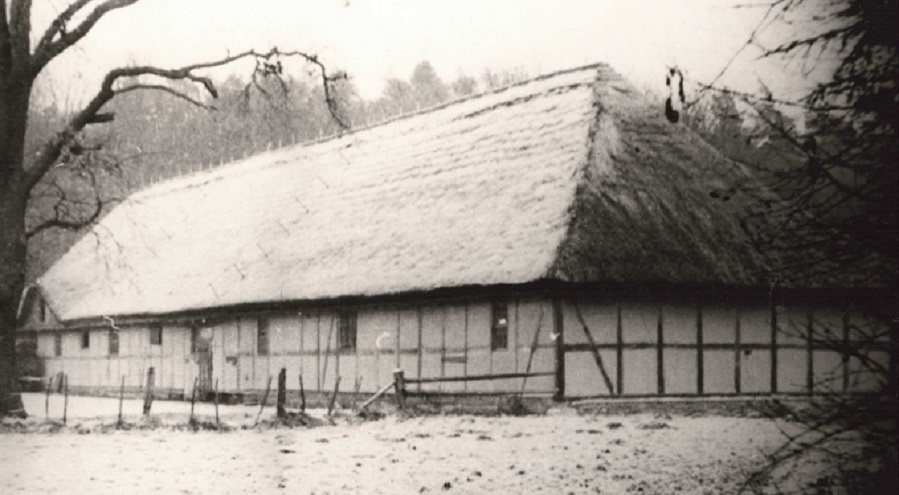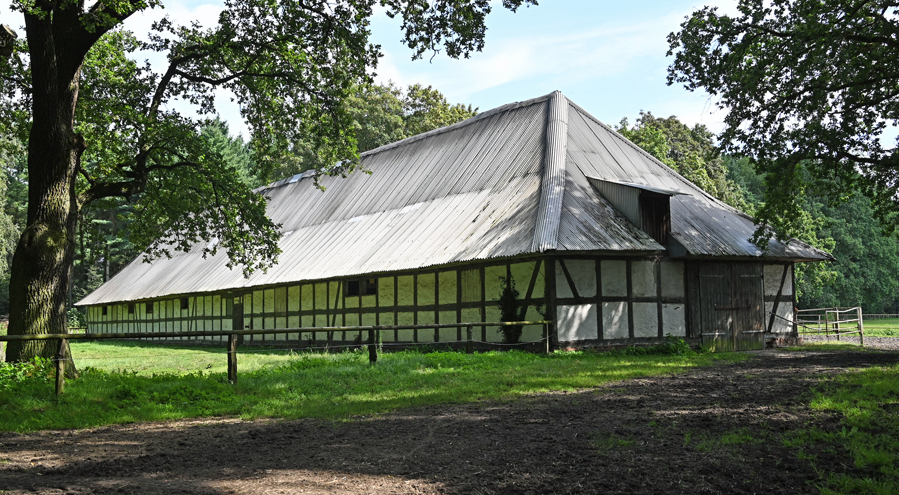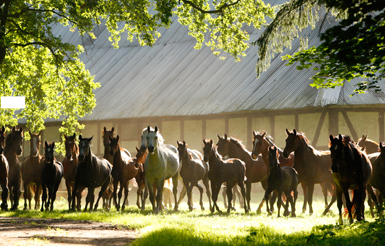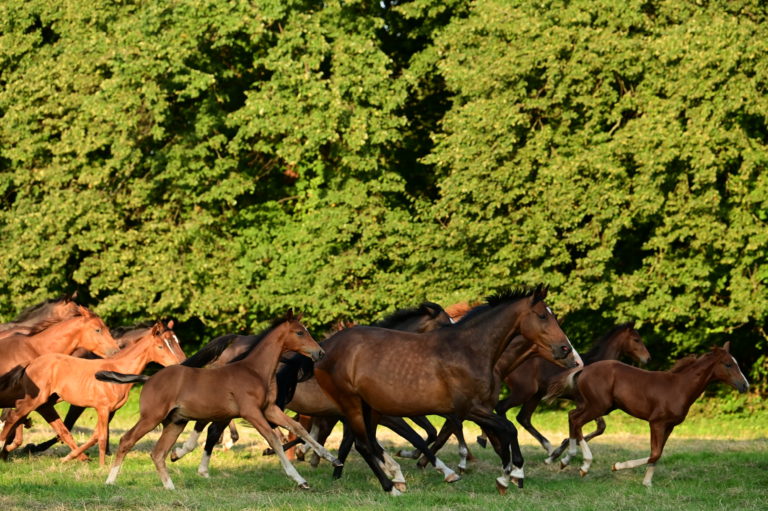Glasewaldstall stable & horse graveyard
The stud stretches across around 420 hectares of land. This land is the source of all of the horses’ raw food. In the spirit of a healthy circular economy, horse manure is used to fertilise the agricultural land. The stud also boasts excellent species diversity.
Space was at a premium at the Neustadt stud in around 1900. Some stables were turned into homes – but the horses continued to grow in number. That’s why the state stable master at the time, Siegfried Graf Lehndorff (1896 to 1906) decided to build the Glasewaldstall stable. This large, timber-framed stable now serves as a summer stable for around 40 mares with their foals.
The stable was named after the Saxon building inspector Ephraim Wolfgang Glasewald, who Carl Graf von Lindenau entrusted with the construction of the Neustadt stud in 1788.


Move the slider to see the building change over time.
The horse graveyard is located on the way from the main stud towards Sieversdorf. Two boulders mark the graves of stallions Sheridan and Mailand – founders of the commercial horse breeding programme from 1920 – as well as the three stallions Hexenschuß, Neumond and Salm, who revived Brandenburg’s horse breeding activities after the Second World War. Born in the main stud in 1941, the stallion known as Salm was the last horse to be buried here.
Have the entire text read aloud.

Seen and heard everything?

Our matching offers
Carriage & Kremser rides
Experience the “Sanssouci of horses” from its most beautiful side. Away from the hustle and bustle and stress of everyday life, we offer you a special view of the Neustadt studs with a carriage or charabanc ride (German website).
Guided tours
Discover the stud farms on guided tours and learn a lot of interesting facts about the history, horse breeding and famous horses (German website).
Offers for groups and tour operators
Ideal as a stop-over destination and day trip (German website).









